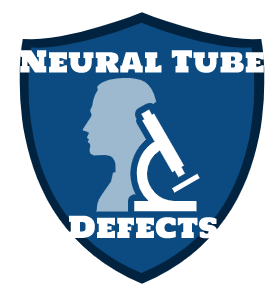Neural Tube Defects
Chief Editor- Suraj Gupte, Authors- Ramani Ranjan, Sudhir Mishra, Satish Tiwari
Part 1 - Spotlight: Neonatal Nutrition
Recent Advances in Pediatrics Special Volume—25: Perspectives in Neonatology
by Suraj Gupte

Neural Tube Defects
INTRODUCTION
Defects of the neural tube encompass a wide range of congenital spine and spinal cord defects. These defects involve the imperfect development of the neuropore during embryogenesis and the subsequent mal-development of the adjacent bone and mesenchymal structures. Neural tube defects (NTDs) account for the largest proportion of congenital anomalies of the CNS. The term dysraphism is often used in this context and it stands for incomplete closure of a raphe and defective fusion, particularly of the neural tube. NTDs result from a number of developmental malformations along the neuroaxis from the developing brain to the sacrum and are collectively termed neural tube defect.
SPECTRUM
The spectrum of NTDs is shown in Table 13.1.
Table 13.1 Spectrum of neural tube defects
1. | Spina bifida |
i. Spina bifida occulta ii. Meningocele iii. Meningomyeloceles | |
2. | Anencephaly |
3. | Encephalocele |
EPIDEMIOLOGY Hospital-based records from major cities of India, where roughly a quarter of the population resides, identified the frequency of neural tube defects (NTDs) as ranging from 3.9 to 8.8 per 1000 births but incidence of NTDs in rural and least developed part of India is reported to be 6.57-8.21 per 1000 live births, which is among the highest worldwide.1
In the United States, the overall incidence evaluated using a population- based surveillance method was found to be 4.6 cases per 10,000 births, but during the period 1983 through 1990, there was a gradual decline in the rate from 5.9 to 3.2 cases per 10,000 births.2
EMBRYOLOGY
The human embryo passes through 23 stages of development after conception, each occupying approximately 2-3 days. Two different processes form the CNS. The first is primary neurulation, which refers to the formation of the neural structures into a tube, thereby forming the brain and spinal cord. The process of neurulation, or neural tube formation, begins with the development of the notochord (stages 8–12, days 18–27). Secondary neurulation refers to the formation of the lower spinal cord, which gives rise to the lumbar and the sacral elements. The neural plate is formed at the stage 8 (days 17-19), the neural fold occurs at the stage 9 (days 19-21), and the fusion of the neural folds occurs at stage 10 (days 22-23). For a brief period, the neural tube is open at both the ends, and the neural canal communicates freely with the amniotic cavity. Failure of closure of the neural tube allows excretion of fetal substances (a-fetoprotein [AFP], acetyl cholinesterase) into the amniotic fluid, serving as biochemical markers for a NTD. Prenatal screening of maternal serum for AFP in the 16th-18th weeks of gestation is an effective method for identifying pregnancies at risk for fetuses with NTDs in utero. The type of NTD has got relation to the various stages of development as cited below:
- Any disruption during stages 8-10 (i.e., when the neural plate begins its first fold and fuses to form the neural tube) can cause most severe form of NTD called craniorachischisis where essentially total failure of neurulation occurs. A neural plate-like structure is present throughout, and no overlying axial skeleton or dermal covering
- Stage 11 (days 23–26) is when the closure of the rostral neuropore Failure at this point results in anencephaly.
- Myelomeningocele results due to disruption of stage 12 (days 26–30) i.e. closure of the caudal
It is evident that most NTD occur as a result of maldevelopment mostly before women get to know about their pregnancy and beyond day 30, a disruption is unlikely to be able to cause an NTD. Associated defects with NTD include hydrocephalus and hindbrain malformations such as Chiari II malformation. The associated defects are explained by unified theory of neural tube defects3 in year 1989 as per the following sequence of events.
Failure of the neural folds to close completely leaves a dorsal defect or myeloschisis. This leads to cerebral spinal fluid (CSF) leak through the defect (from the ventricles through the central canal and into the amniotic fluid). CSF leak leads to collapse of the primitive ventricular system and downward and upward herniation of the small cerebellum. In addition, the posterior fossa does not develop to its full size and the neuroblasts do not migrate outward at a normal rate from the ventricles into the cortex.
ETIOLOGY
NTDs arise from a complex combination of genetic and environmental interactions. Over the last century, teratogens implicated in the etiology of NTDs in experimental animals and in humans include potato blight, hyperthermia, low economic status, antihistamine and sulfonamide use, nutritional deficiencies, vitamin deficiencies, and anticonvulsant use. Of all the suspected teratogens, carbamazepine, valproic acid, and folate deficiency have been most strongly tied to the development of neural tube defects. In humans, carbamazepine and valproic acid have been definitively identified as teratogens. Valproic acid is a known folate antagonist and its association with neural tube defects may be through that action. This risk seems to be higher among women using poly-pharmacy and valproic acid.4
It is essential to point out here that NTDs preventable through folate supplementation are isolated NTDs, and exclude other associated NTDs— grouped in syndrome, sequence, or association of other congenital anomalies.5 Genetic disorders associated with NTDs include single gene mutations (e.g. Meckel’s syndrome) and chromosomal abnormalities (e.g. Trisomy 13, Trisomy 18). More commonly NTDs have a multifactorial inheritance in which the genetic predisposition is polygenic and is influenced by gene-gene interactions.
The possible relation between folic acid deficiency and NTDs in humans was first reported by Hibbard in 1964. He observed that there was a higher incidence of aberrant folate metabolism in women who had pregnancies associated with fetal malformations. Smithells and co-workers in 1976 observed that maternal red blood cell folate levels were significantly lower when the fetus had NTDs in comparison to when the fetus did not have NTDs.6 This observation led to the possibility of preventing neural tube
Table 13.2 Genetic defects related to folate metabolism that may lead to NTDs8
1. | Defects related to folate transport |
i. Reduced levels of folate carrier ii. Folate receptor defects | |
2. | Defects related to THFA (Tetrahydrofolic Acid) dependent metabolic pathways |
i. Methylene tetrahydrofolate reductase mediated ii. Methionine synthase mediated iii. Methionine synthase reductase mediated iv. Methylene tetrahydrofolate dehydrogenase mediated |
defects by peri-conceptional vitamin supplementation.7 Genetic defects related to folate metabolism that may be responsible for NTDs are listed in Table 13.2.
Spina Bifida Occulta
In this group of neural tube defects, the meninges do not herniate through the bony defect. This lesion is covered by skin (i.e. closed), therefore, rendering the underlying neurologic involvement occult or hidden. These patients do not have associated hydrocephalus or Chiari II malformations. Often, a skin lesion such as a hairy patch, dermal sinus tract, dimple, hemangioma, or lipoma points to the underlying spina bifida and neurologic abnormality present in the thoracic, lumbar or sacral region. A good rule of thumb is that a lesion (e.g. pit, tract) below the gluteal crease is often a pilonidal sinus and needs no further evaluation. Those tracts, pits, or lesions above the gluteal fold should be evaluated further.
Lesions that are questionable can be scanned with ultrasonography in a neonate or with MRI in an older child. Ultrasonography or MRI delineates the presence or absence of a tethered cord or other spinal anomaly. Plain radiology can reveal panoply of anomalies, such as fused vertebrae, midline defects, bony spurs, or abnormal laminae. Table 13.3 identifies cutaneous lesions wherein imaging should or should not be carried in the presence of spina bifida occulta.
Table 13.3 Cutaneous lesions associated with occult spinal dysraphism9
Imaging Indicated
- Subcutaneous mass or lipoma
- Hairy patch
- Dermal sinus
- Atypical dimples (deep, >5 mm, >25 mm from anal verge)
- Vascular lesion, g. hemangioma or telangiectasia
- Skin appendages or polypoid lesions, g. skin tags, tail-like appendages
- Scar-like lesions
Imaging is of Uncertain Value
- Hyperpigmented patches
- Deviation of the gluteal fold
Imaging Not Required
Simple dimples (<5 mm, <25 mm from anal verge) Coccygeal pits
Recurrent meningitis of occult origin should prompt careful examination for a small sinus tract in the posterior midline region, including the back of the head.9 Lower back sinuses are usually above the gluteal fold and are directed cephalad. Tethered spinal cord syndrome may also be an associated problem. The term tethered cord syndrome has become synonymous with a complex of symptoms and findings associated with various spinal dysraphic states. The symptoms can include weakness of the lower extremities, deterioration of gait, changes in urinary continence, and the development of scoliosis. Untreated occult dysraphic states may demonstrate this syndrome at any age, although it is seen most commonly in young children or young adults. Those with a previously treated lesion (typically myelomeningocele or spinal lipoma) may redevelop a tethered cord syndrome in the years after treatment because of retethering. Diastematomyelia commonly has bony abnormalities that require surgical intervention along with untethering of the spinal cord.
Lipomyelomeningoceles (or spinal cord lipomas) are occult dysraphic states consisting of a partial dorsal myeloschisis with lipoma fused to the dorsal aspect of the open spinal cord. Most patients are normal at birth and through the first year of life, although sudden neurologic deterioration has been observed. The incidence of neurologic deficits begins to increase during the second year of life, and by early childhood, most patients will probably have some deficit. The patients are frequently referred at an early age for evaluation of the deformity caused by the subcutaneous fat. The mass is typically located above the intergluteal cleft but may extend into one buttock. Fifty percent have associated cutaneous markings, such as a midline dimple or dermal sinus, a hairy patch, or a hemangiomatous nevus. The only effective treatment is surgery that untethers the spinal cord from its connection to the surrounding tissues. Total removal of fat attached to the cord should not be done as an attempt to do so would inevitably injure the adjacent neural tissue.10
MRI screening for evidence of occultspinal cordtethering is recommended in all patients with urogenital, anorectal, and sacral anomalies.11 If abnormalities are discovered, prophylactic untethering should be performed. Because these patients are clinically stable, neurosurgical intervention can be delayed in those patients undergoing significant abdominal or pelvic reconstructions.
Meningocele
A meningocele is simply a herniation of the meninges through the bony defect (spina bifida). The spinal cord and nerve roots do not herniate into this dorsal dural sac. A fluctuant midline mass that might transilluminate occurs along the vertebral column, usually in the lower back. Anterior meningoceles are most common in the sacral region, usually herniating through a focal bony defect. Females are more affected than males. Most meningoceles are well covered with skin and pose no immediate threat to the patient. These
Lesions are important to differentiate from myelomeningocele because their treatment and prognosis are so different from myelomeningocele. Neonates with a meningocele usually have normal findings upon physical examination and a covered (closed) dural sac and do not have associated neurologic malformations such as hydrocephalus or Chiari II. Careful neurologic examination is mandatory. Orthopedic and urologic examination should also be considered. In asymptomatic children with normal neurologic findings and full-thickness skin covering the meningocele, surgery may be delayed or sometimes not performed. Surgical closure of these defects is usually done through a sacral laminectomy. This approach allows the identification and restoration of neural elements to the canal, the untethering of the spinal cord and direct closure of the neck. A staged anterior abdominal approach may be necessary when the sac is huge.11
Meningomyeloceles
Themyelomeningocele, anopenspinalcorddefect, couldresultfromaprimary failure of the neural tube to close or from a secondary reopening of the closed neural tube.12 It represents the most severe form of dysraphism (aperta or open form), involving the vertebral column and spinal cord where the spinal cord and nerve roots herniate into a sac comprising the meninges. This sac protrudes through the bone and musculocutaneous defect. The spinal cord often ends in this sac, in which it is splayed open, exposing the central canal. The splayed-open neural structure is called the neural placode. Neurological anomalies, such as hydrocephalus and Chiari II malformation accompany myelomeningocele. In addition, meningomyeloceles have a higher incidence of associated intestinal, cardiac, and esophageal malformations, as well as renal and urogenital anomalies. Most neonates with myelomeningocele have orthopedic anomalies of their lower extremities and urogenital anomalies due to involvement of the sacral nerve roots. Ninety percent of the babies with meningomyeloceles have Arnold-chiari malformation requiring surgery to relieve hydrocephalus.9,13
A myelomeningocele may be located anywhere along the neuraxis, but
the lumbosacral region accounts for at least 75% of the cases. The location of the myelomeningocele and the associated lesions define the extent and degree of the neurologic deficit. A lesion in the low sacral region causes bowel and bladder incontinence associated with anesthesia in the perineal area but with preserved motor function. Newborns with a defect in the midlumbar or high lumbothoracic region typically have either a saclike cystic structure covered by a thin layer of partially epithelialized tissue or an exposed flat neural placode without overlying tissue.
The initial evaluation of the baby born with a myelomeningocele is oriented toward promptly identifying any associated problems, particularly those that might preclude prompt closure of the spinal defect. The immediate neurosurgical goal is to protect and preserve neurologic function by closing the defect and preventing infection. Routine neonatal care is begun
immediately. The defect is protected from trauma and drying by applying a sterile, non-sticking dressing moistened with saline. Neurotoxic substances such as povidone-iodine should not be applied to the malformation.11 Parenteral antibiotics covering Gram-positive and negative bacteria are begun and continued through the surgical closure of the defect.
Anencephaly
Onset of anencephaly is estimated to be no later than 24 days of gestation. Antenataly polyhydramnios is a frequent feature. Approximately 75% of the infants are stillborn and the remainders die in the neonatal period. The disorder is not rare, and epidemiological studies reveal striking variations in prevalence as a function of geographical location, sex, ethnic group, and race, season of the year, maternal age, social class, and history of affected siblings. Anencephaly is relatively more common in whites than in blacks, in the Irish than in most other ethnic groups, in girls than in boys (especially in preterm infants), and in infants of particularly very young or particularly old mothers.14 The risk increases with decreasing social class and with the history of affected siblings in the family. Since the late 1970s, the incidence of anencephaly, like that of myelomeningocele has been declining. Rates of occurrence of anencephaly decreased from approximately 0.4 to 0.5 per 1000 live births in 1970 to approximately 0.2 per 1000 live births in 1989. This defect is identified readily prenatally by cranial ultrasonography in the second trimester of gestation. The outcome with such babies is extremely poor. Most babies would not survive beyond first week of life. The debate has raged about whether it is appropriate to make an exception exclusively with anencephalic infants, changing the definition of “brain dead” in their case so that needed organs can be removed in time to be of use.
Encephalocele
Encephalocele may be envisioned as a restricted disorder of neurulation involving anterior neural tube closure. The lesion occurs in the occipital region in 70 to 80% of cases. A less common site is the frontal region, where the encephalocele may protrude into the nasal cavity. In the typical occipital encephalocele, the protruding brain is usually derived from the occipital lobe and may be accompanied by dysraphic disturbances involving cerebellum and superior mesencephalon. The neural tissue in an encephalocele usually connects to the underlying CNS through a narrow neck of tissue. Encephaloceles located in the low occipital or high cervical regions and combined with deformities of lower brain stem and of base of skull and upper cervical vertebrae characteristic of the Chiari type II malformation (associated with myelomeningocele) comprise the Chiari type III malformation. This type of encephalocele contains cerebellum in virtually all cases and occipital lobes in approximately one half of cases.
Themostcommonlyrecognizedsyndromesassociatedwithencephalocele are Meckel syndrome (characterized by occipital encephalocele,
microcephaly, microphthalmia, cleft lip and palate, polydactyly, polycystic kidneys, ambiguous genitalia and other deformities) and Walker-Warburg syndrome. Diagnosis by intrauterine ultrasonography in the second trimester has been well-documented diagnosis before fetal viability has been followed by elective termination; later diagnosis may allow delivery by cesarean section.14
Neurosurgical intervention is indicated in most patients. Exceptions include those with massive lesions and marked microcephaly. Surgery is necessary in the neonatal period for ulcerated lesions that are leaking cerebrospinal fluid. An operation can be deferred if adequate skin covering is present. Outcome is difficult to determine precisely because of variability in selection for surgical treatment. Outcome is more favorable for infants with anterior encephaloceles than those with posterior encephaloceles.
MANAGEMENT
Presence of open NTDs can be detected with the measurement of prenatal
a-fetoprotein (AFP) in the amniotic fluid or maternal bloodstream. AFP is the major serum protein in early embryonic life and is 90% of the total serum globulin in a fetus. It is believed to be involved in preventing fetal immune rejection and is first made in the yolk sac and then later in the GI system and liver of the fetus. It goes from the fetal blood stream to the fetal urinary tract, where it is excreted into the maternal amniotic fluid. The AFP can also leak into the amniotic fluid from open neural tube defects such as anencephaly and myelomeningocele, in which the fetal blood stream is in direct contact with the amniotic fluid.
The first step in prenatal screening is measuring the maternal serum AFP at 15-20 weeks’ gestation. A patient-specific risk is then calculated based on the gestational age and AFP level. For example, at 20 weeks’ gestation, a maternal serum AFP concentration higher than 1,000 ng/mL would be indicative of an open neural tube defect. Normal AFP concentration in the maternal serum is less than 500 ng/mL. Amniotic fluid acetylcholinesterase levels add an increased degree of resolution. Although not specific for open neural tube defects, acetylcholinesterase analysis by gel electrophoresis of amniotic fluid is significantly less influenced by fetal blood than is alpha- fetoprotein and, furthermore, may prove as reliable a diagnostic test for open neural tube defect.15 Maternal serum AFP screening represents another potentially important tool for early detection of high-risk pregnancy.16
Detection of a neural tube defect with fetal ultrasonography in the hands of a skilled ultrasonographer is usually 98% specific. False-positive findings can result from multiple pregnancies or inaccurate fetal dating. However, closed neural tube defects can sometimes remain undetected, especially in cases of skin-covered lipomyelomeningoceles and meningoceles, in which the AFP levels may also be normal.17
Advantage of prenatal diagnosis is that it allows choice of timing and mode of delivery to provide optimal outcome. For those who opt to continue with a pregnancy after anencephaly has been diagnosed, vaginal delivery
should obviously be aimed for.18 There is evidence from Luthy et al.19 that if a fetus with spina bifida has good muscle function and leg movement by the time the lungs are mature, paralysis is minimized by an elective cesarean section at 37 weeks’ gestation prior to the onset of labor. After delivery of the baby the emphasis should be on the following as part of initial evaluation:
- Site and level of the lesion
- Motor and sensory level
- Presence of associated hydrocephalus
- Presence of associated symptomatic hindbrain herniation (e.g. Chiari II malformation), and
- Presence of associated orthopedic
Treatment and supervision of a child and family with a neural tube defect requires a multidisciplinary team approach, including surgeons, physicians and therapists with one individual (often a pediatrician) acting as the advocate and coordinator of the treatment program.9
The key early priorities for treating open NTDs are to prevent infection from developing in the exposed nerves and tissue through the spine defect and to protect the exposed nerves and structures from additional trauma. Surgery is often done within a day or so of birth but can be delayed for several days (except when there is a CSF leak) to allow the parents time to begin to adjust to the shock and to prepare for the multiple procedures and inevitable problems that lie ahead. Evaluation of other congenital anomalies and renal function can also be initiated before surgery.9,11 After repair of a myelomeningocele, most infants require a shunting procedure for hydrocephalus. If symptoms or signs of hindbrain dysfunction appear, early surgical decompression of the posterior fossa is indicated. Some children will need subsequent surgeries to manage problems with the feet, hips or spine. Individuals with hydrocephalus generally will require additional surgeries to replace the shunt which can be outgrown or become clogged.
Very recently, Adzick et al proved in the Management of myelom-
eningocele Study (MOMS), the efficacy of fetal MMC surgery as compared to standard postnatal repair. Prenatal surgery resulted in significant reduction of hindbrain herniation (Chiari II malformation), a reduction in need for shunting to relieve hydrocephalus, as well as improvements in motor function and mental development at 30 months. However, preterm delivery and obstetrical complications increased leading to neutralization of benefits.20
Some individuals with spina bifida require assistive mobility devices such as braces, crutches, or wheelchairs. The location of the malformation on the spine often indicates the type of assistive devices needed. Children with a defect high on the spine and more extensive paralysis will often require a wheelchair, while those with a defect lower on the spine may be able to use crutches, bladder cauterizations, leg braces, or walkers. Beginning special exercises for the legs and feet at an early age may help prepare the child for walking with braces or crutches when he or she is older. Treatment of bladder and bowel problems typically begins soon after birth, and may include bladder catheterizations and bowel management regimens.
PREVENTION
Prenatal diagnosis of neural tube defects and termination of pregnancy involving an affected fetus are effective methods of secondary prevention. However, a method of primary prevention would be more widely acceptable. Evidence now shows that folate supplementation around the time of conception and therefore neural tube closure has a major preventive effect on the occurrence of neural tube defects. These observations were followed by the recommendation of the US Public Health Service and the American Academy of Pediatrics that ‘‘all women considering pregnancy should consume 0.4 mg of folic acid daily to prevent neural tube defects, although the optimal methods of folate supplementation and dose of the supplement is not clear.14
Periconceptional intake of 0.4 mg of folic acid per day by the pregnant women (starting from 1 month prior to 3 months after conception) can prevent 75% of all neural tube defects. Intake of 4 mg/d is recommended to prevent recurrences.21 Women at high risk for NTDs, that is, women with previous NTD-affected pregnancy, obesity (BMI > 30), diabetes, and epilepsy, should receive 4 to 5 mg of folic acid daily preconceptionally, starting at least one month before conception and continuing throughout the first trimester of pregnancy. However, the caregivers should be aware that high levels of folic acid intake can mask vitamin B12 deficiency, resulting in permanent nerve damage, especially in elderly individuals. 22
RELATED POST

Empyema Thoracis

Bell Palsy (Peripheral Facial Palsy)

Opportunistic Infections









